OfferGet 10% off on Dissertation, Assignments, Essays, Thesis
“No portion of the work referred to in this dissertation has been submitted in support of an application for another degree or qualification of this institution or any other university or other institution of learning.”
Firstly, I would like to thank the almighty for offering me the strength to undertake such a demanding project along with completing it within the stipulated period of time. I would also like to thank my family for all the support and encouragement during the entire period of this research work.
Secondly, I would like to thank my project supervisor ____________ for his patience and understanding during the process.
Finally, all my friends and well wishers who have been a direct and indirect support in completing this research work.
I am deeply grateful to all of you because without you my work would not have been possible.
The research aimed at identifying the impact of social media influence on cosmetic industry in Thailand. For this purpose, both primary and secondary research was conducted. The primary research was quantitative in nature based on using surveys on 218 Thai women. Four research questions along with eight hypotheses were proposed. Based on the positive association between the literature review and surveys, it was found that social media influencers have the tendency to affect the buying behavior of consumers along with enhancing the product awareness level. This is mainly because of their product knowledge, reliable appeal and fame in the society, uniqueness of their lifestyle, fan following and likes on their social media profiles, and consistency in terms of promoting a product. This often results in word of mouth that is further helpful in impacting the buying behavior in a positive manner.
1.0: Introduction and Background of the Research
The rise of social media across the world has changed the dynamics of many industries. Mollen and Wilson (2010) stated that social media has emerged as one of the highly successful tools in terms of influencing the buying behaviour of individuals. Shimp and Andrews (2013) further added that social media is helpful in interacting with a number of individuals along with engaging them in various discussions. It has also emerged as one of the highly successful tools in promoting products and services along with influencing the buying trends and behaviour of people in a significant manner. The major purpose of the study is to ascertain the impact of social media influence on cosmetic industry in Thailand. Thailand has been one of the most attractive countries being thronged by tourists and often known for its diversified culture and shopping attractions. The cosmetic industry has been pushed to a growth rate of 10% by the Thai government and recent trends have shown an increased eagerness in buying cosmetic and beauty products. However, there is also an increased awareness embedded with a cautious approach that has intensified the competition. Hollebeek (2011) stated that in order to survive in the competitive market, companies need to use aggressive marketing strategies and this has increased the dependency on the social media marketing. The research aims to underpin the rising impact of social media influence on cosmetic industry of Thailand by using both primary and secondary data.
1.1: PROBLEM Statement
Casalo et al (2007) pointed that Thailand has witnessed an increased interest among consumers to buy beauty and personal care products. This has also led to a cut throat competition between many international and local brands. However, the biggest problem has been in the form of influencing the buying behaviour of consumers using innovative marketing strategies like social media. The impact of social media on various industries has been closely studied and cosmetic industry is no more an exception but conducting research in regards to Thailand using primary and secondary research will be something new, Since there are not many studies signifying the influence of social media on cosmetic industry in Thailand and the current research will address this problem.
1.2: Rationale for the Research
The research will be focusing on the impact of the social media and its influence on the cosmetic industry especially on consumers. This will also help in addressing the benefits and challenges associated with the influence of social media. At the same time, not all views and opinions on social media are genuine that affects the mindset of consumers. Still, social media continues to impact the buying behaviour. The rationale is based on underpinning why social media has such an impact in regards to cosmetic industry.
1.3: Scope of the Research
The scope of the research seems to be quite broad with focus on primary as well as secondary data. This will help in addressing the key questions and issues from existing realities and raw realities planned to be obtained from surveys. Thus, the scope seems to be quite broad.
2.1: Introduction
The chapter presents an overview of the social media influencers, characteristics of social media influencers, social media communities, impact of social media marketing, and impact of social media marketing on cosmetic industry.
2.2: Social Media Influencers
Nowadays, social media is an important part of our society. It has changed the way people communicate and interact with each other (Wendlandt, 2012). There are many social media websites that people often use such as Facebook, Twitter and YouTube. Social media websites act as space for people sharing their activities, opinions, belief and interests (Wang, Chunling and Wei 2012). Some people become more powerful than others, they are reliable to be asked for advices providing their opinions to influence others ‘attitudes and behaviors, they are determined as opinion leaders or social media influencers (Cao, Meister and Klante,2014;Rosenthal, 2015). Nonprofit Business Advisor (2015) defined the meaning of Social media influencers who have enormous potential to influence and persuade others. For instance, they have many followers who rely on what they say, they can be whether celebrities (musicians, actors, authors and athletes) or professional persons who are experts in certain industry or ordinal people who are look-alike their followers via (Facebook, Twitter, Blogs, YouTube) .Social media influencers have different names, which are YouTubers, Bloggers and Vloggers (video bloggers), depending which platform they use. For example, a beauty YouTuber created her own videos about using make-up on YouTube website visible to many teenagers who are interested in makeup (Lee and Watkins, 2016; Georgia, 2015).
2.2.1: Social Media Influencers’ Recommendations
Online recommendations by social media influencers are helpful for consumers to filter their choices and get the better decisions (Zietek, 2016). The majority of consumers have positive viewpoints on shared content of social media influencers. This is supported by the study of Cao, Meister and Klante, (2014) found that bloggers and celebrities were followed by their audiences, 47% and 41% respectively, while the audiences followed fashion companies 37 % and magazines were under 30 %. Noticeably, people pay attention on social media influencers more than companies.
Moreover, Cao, Meister and Klante (2014) also claimed that recommendations of social media influencers were considered as friends’ recommendations. The strong tie with peers via social media is defined as the level of associations that people are willing to maintain some relationship with their peers. The relationship could be determined such as close friends, casual friends or strangers that offer significantly, degree of relationship (Wang, Chunling and Wei 2012). For instance, Facebook users could classify the types of relationship in each friend such as family or any other type of relationships (Zhang, 2014).
2.2.2: The characteristic of social media influencers
Persuasion- Persuasion is a tool of influencers being able to persuade others to do what they require. Robert B. Cialdini (2007) created six principles of persuasion and influence that includes reciprocity, consistency, social proof, authority, scarcity and liking. These are weapons of influencers being able to attract their followers (Shimp and Andrews, 2013).
Reciprocity: when people tend to return favors. For instance, if a person receives a gift from a peer, he or she will feel committed to return the cordiality later on.
Consistency: when people have a tendency to commit and be reliable with things they have said or written in the past. For example if a person agrees with something, he or she is more likely to support with agreement.
Social proof: it is “brand wagon effect” that people tend to do what most people do because they are not sure themselves when the situation is vague or ambiguous, for example people more likely to buy something similar as most people purchase.
Liking: people tend to be influenced by someone they like. For example there is likelihood of people to purchase product from somebody that they prefer.
Authority: people are more likely to be obeyed by experts or authorities, for example, people tend to be influenced by a famous doctor who suggests a skin cream instead of ordinal person.
Scarcity: the short supply of products leads people to get more demands, so they have a tendency to be influenced to pay more for it.
Rosenthal (2015) suggested that six principles could work in some scenarios that influencers could use to change people’s minds. Furthermore, Zietek (2016) also claimed that these principles could disclose understanding of the power of influencer on consumers and this knowledge to adapt social media marketing strategy.
Authenticity- The authenticity played the impotent role; it was an essential component of influencers on influential people (Zietek, 2016). Georgia (2015) stated that credibility was the nature of being trustworthy or deserving medium of trust, if it was lost from someone, it was difficult to be considered as influencer. The high level of credibility in an influencer, the strong believability of their followers had on the influencer, for instance being a doctor as authority of the principle of Robert B. Cialdini (Rosenthal, 2015). Moreover, Rosenthal (2015) claimed that consumers were more likely to be influenced to purchase a product by influencers who contained the power of authenticity to influence consumer’s purchase decisions. Therefore, people tend to be persuaded more when they perceive information from authentic influencers.
Popularity - Social media websites such as Facebook displays the popularity of users, which can be defined by numbers of, likes, shares and followers. The social media can prove to be an important medium of being influence, as the principles of Robert B Cialdini that people tended to be influenced by others in their surroundings and had a tendency to perceive to be similar with surrounding people (Rosenthal, 2015). Moreover, Sherman et al (2016) found that on Facebook, people were more likely to see photos showed with many likes rather than photos which contained few likes and if photo had contained more likes from their friends, they would be strongly relative with the photo and that would have an effect on them. Conversely, Zietek (2016) argued that on social media websites some influencers had fake followers that the quality of popularity of influencers could not be measured by the amount of followers, but it could be measured by their reach and engagement with their followers.
Uniqueness- Basically, most people recognize something distinctive from others, for example each brand has different sale points from other brands. Social media influencers also use the same idea; they try to distinguish themselves to other influencers. Uniqueness was an important characteristic of social media influencers such as different personalities, styles, presentations and themes that consumers were not only able to recognize them, but also easily relate with them (Georgia2015). For instance, a beauty model on YouTube used her unique style with many colors in her graphic design for presentation a beauty product (Weare, 2016).
2.3: Social Media Communities
Communities on social media websites have been formed by ordinal users who have the similar interests with other members. The members of online community had a sensation of strong relation among the group members (Boon-Long and Wongsurawat, 2015). Even though members might not know each other, but they feel to be a part of their social community and still have relations with one another, they also distinguish themselves from other communities (Boon-Long and Wongsurawat, 2015). Martinka (2012) defined the meaning of social media communities as, before consumers getting a purchase that they often required others’ opinions for filtering their choices. Therefore, the social media communities give a solution for consumers to find other viewpoints which have similar interests that they were gathered in one place.
The Martinka (2012) also claimed that social media communities affected consumer purchase decision. The evidence suggested that Facebook communities had a significant impact on consumer purchase behavior because it contained some offline friends as influencers to provide advices to consumers, whereas Twitter communities did not have an effect on purchase behavior of consumers because friends in Twitter communities were defined as strangers that they were not considered close as Facebook friends (Martinka,2012). Therefore, a social media influencer could be a part of a social community in order to spread their influence to other members (Rosenthal, 2015). Thus, the influencers had launched videos for many years, having strong connections with audiences (Georgia, 2015).
2.4: The Impact of Social Media Influencers Marketing
Influencer marketing is a new approach on social network that advertisers focus on decision-makers who are influenced by social media influencers. These influencers played the important role on driving sales and aggregating prospects consumers (Brown and Hayes, 2008), which had similar characteristic such as demographic, psychographic and behavior (Saravanakumar and SuganthaLakshmi, 2012). According to e-marketer (2015), three quarters of marketers said that using influencer marketing was effective to drive engagement and awareness. This evidence shows that more than 67% of marketers were satisfied with the result of using content promotion by engaging with social media influencers.
In addition, there is another research form Brouwer (2017) also supporting the evidence that 82% of branding companies have planned to use influencer-marketing campaigns to launch videos on social media channels in 2017. It can be explained by a notable example from Saravanakumar and SuganthaLakshmi (2012), Ford Motor Company launched a campaign “Fiesta Movement” using around 100 social media influencers to promote the new campaign. They created videos related to the Fiesta campaign on YouTube. The campaign was successful with the 50,000 customers asked for information about the car and in the first week ten thousand cars were sold.
Furthermore, Isosuo (2016) suggested that posting brands and products from social media influencers seemed like a natural part of their lives more than advertising from companies, their contents were more reliable and trustworthy in consumers ‘point of view. Woods (2017) found that after respondents saw products used by influencers on Instagram, Twitter, Vine and YouTube, 40% of the respondents had purchased the products and 20% of them shared the contents form the influencers, whereas 33% of millennials followed influencers via Twitter or Vine. Therefore, virtual endorsement and paid media via social media contents make social media influencer marketing to be powerful strategy.
2.5: E-WOM of Social Media Influencers
Influencer marketing was genuinely word of mouth that consumers willing to receive a positive content and react to it from reliable friends (Woods, 2017). In other words, consumers were able to share opinions and information from other users through social media and spread the opinions to others (Wang, Yu and Wei, 2012). Several studies found that e-WOM had a significant association with consumer purchase decisions, which quality, credibility, attitude, and social proof these factors causing e-WOM was a powerful tool of marketing to influence consumer purchase intentions (Erkan,2016; Boon-Long and Wongsurawat 2015). However, the nature of WOM had positive and negative site, several researchers claimed that negative conversations diffused faster and stronger than positive conversations (Erkan, 2016; Songyi 2016). In addition, Erkan (2016) found that people tended to seek information from both sites of a product through reviews, comments and recommendations from their peer.
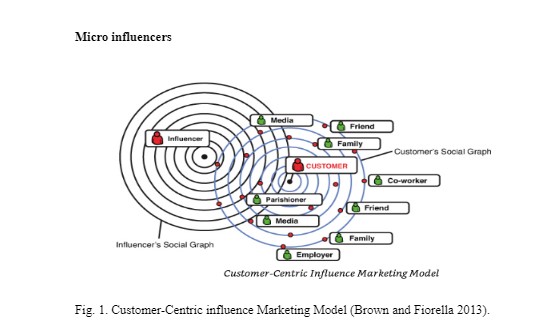
Micro influencers were people surrounding decision makers; they were the consequence of WOM by spreading massages to receivers (Brown and Fiorella 2013). According to the Customer- Centric Influence Marketing Model (Fig. 1), micro influencers could receive the massages from social media influencers (macro influencers) and diffusing them to decision makers. Micro influencers did not reach a broad amplification over general communities, but, they affected to smaller groups in specific situations (Zietek 2016). The influencers could also be consumers’ friends, which could provide recommendations to decision makers, for example, a woman who was seeking information about cosmetic products could be influenced by her reality friends, online friends, parents, and cosmetic sellers in a shop, even an expert about make-up techniques (Brown and Fiorella 2013). These people could provide information and confirm or sway that decision because they were close to decision makers. Marketers could work with micro influencers to focus on niche market and get closer directly to prospect consumers, and reduce cost of marketing (Zietek 2016).
2.6: The Impact of Social Media Influencers on Beauty Concepts
To understand cosmetic industry on social media influencers, we have to look at the concepts of beauty on people’s perception, especially, women. A large number of young women were seeking advices and information about beauty and cosmetic products to full fill the beauty concept for themselves.
The majority of beauty concepts of women on social media was influenced by many videos, pictures, contents; most of them were created by beauty models posing as social influencers. They played the important role to influence consumers by showing concept of beauty through their personalities, demonstrating cosmetic products and shaping consumers’ choices toward their followers who were interested about beauty products and make-up techniques via beauty social communities (Georgia 2015). In addition, Georgia (2015) also studied about beauty related social media influencers on YouTube, and found that sharing information by the beauty You Tubers could influence consuming behavior, decision making, even creating new desire of their followers to buy the latest cosmetic products. Thus, the influencers had a significant ability to persuade their audiences; the influencers collected a massive amount of followers in several social media websites through networks of many communities that makes them more powerful (Lee and Watkins 2016).
2.7: The Beauty Concept in Thailand
The concept of beauty in Thailand is explained by Chaipraditkul (2013). He found that the ideal of beauty in Thailand has been shaped through Thai society under the overwhelming western culture and socio-economic hierarchies. Having fair skin was accepted as middle and upper classes, while darker skin was seemed as working class. In terms of beauty concepts lightening skin, it was symbolized as health, wealth, beautiful and trendy these shaving identity of modernity.
Furthermore, the majority of Thai women said that having lightening skin meant having opportunities to get a better job. Undoubtedly, whitening cosmetic products and skin-cares are popular in Thailand.
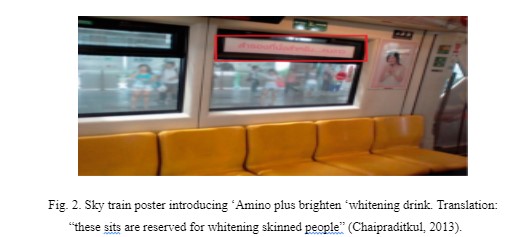
2.8: The Social Media Influencers on Cosmetic Industry in Thailand
The majority of cosmetic companies in Thailand emphasized utilizing social media being an important channel in order to arouse consumers buying cosmetic products (Tungpradit, Premchaisawad and Chetthamrongchai 2015). The study of Tungpradit, Premchaisawad and Chetthamrongchai (2015) also found that marketing communication of companies via Facebook has a significant impact on consumers’ purchase intention on cosmetic products; especially using social media influencer marketing could evoke consumers’ making decision faster because they have ability to reach prospect consumers directly on their Facebook page. Social media influencer has been a trendy career for Thai young people; it became new labor in advertising industry, employed by cosmetic companies for promoting their brands (Asia News Monitor, 2015). Recently, many cosmetic brands in Thailand have a strong proclivity towards social media influencer marketing in order to reach out to large numbers of consumers (Asia News Monitor, 2014). Thai people definition of social media influencer is called “Net Idol” mostly referring to famous people who have many followers and high numbers of likes, views and shares (Aramratsamee et al, 2015).
They also showed their personalities, sex appeal and even cosmetic products through videos, pictures and contents to their audiences on social media (Aramratsamee et al, 2015). The research also claimed that Instagram was the most used channel, whereas Facebook and Twitter were second and third popular channels respectively. The reason behind Instagram success was based on the notion of easily accessible for people to share photos and videos (Isosuo, 2016).
According to Nantasuthiwaree (2016) beauty influencers often showed their sex appeal with cosmetic products and typed some contents in order to persuade their audiences. For example, showing a picture that they were using cosmetic products, presenting before using and after using a product via a picture, demonstrating cosmetic products through videos and providing some techniques. Nantasuthiwaree (2016) also found that beauty social media influencers had an impact on consumer decision-making because they know every little detail of each cosmetic product and provide beneficial information to consumers helping them in easy decision-making. Moreover, people followed beauty influencers because of being attracted by their sex appeal (smiling, face body, skin) and uniqueness and not entirely by their fame (Nantasuthiwaree, 2016).
For instance, the most popular beauty influencer that had an influence on consumer decision was Mrs. Pimtha Manalertruengkul who have 2.9 million Instagram followers because of her lifestyle and uniqueness that attracted her audience (Nantasuthiwaree, 2016; pimtha, 2017).
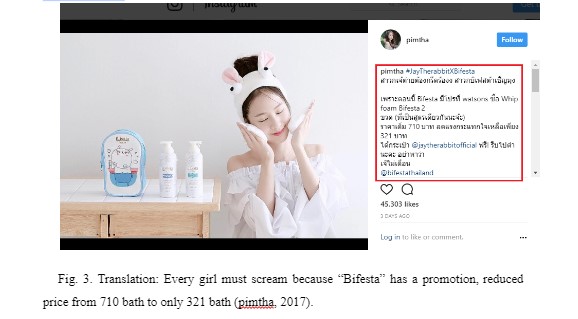
Theory- This research will discuss the theoretical field that indicates the framework of this study and analysis of data. Several previous studies used this theory to find out social media influencer marketing, which the author is using to compare the finding with other relevant studies.
Decision making process

Nowadays, marketers have to focus diligently on the influences that impact each stage of consumer’s decision making process in order to understand what arouses consumer’s behavior. The decision making process is assumed as a long journey before actual purchase is made by consumers. The process includes five stages: (Kotler and Armstrong, 2016)
Need recognition: consumers recognize a problem or need. They can be evoked by internal stimuli and external stimuli. Cao, Meister and Klante, (2014) found that bloggers and celebrities were able to raise the attention level during need recognition stage and Information search stage.
Information search: consumers might search for information related to their needs; in fact they can receive more information from social media influencers that can help in the purchasing decision.
Evaluation: consumers choose a product among alternative brands that they evaluate in terms of attributes such as price, style of a product in order to make a decision. The evidence shows that consumers’ friends played most important roles of consultants, offering recommendation and reviewing products; that had an intense impact on the evaluation process. (Cao, Meister and Klante, 2014)
Purchase: consumers buy the most preferred brand, so they have an intention to make a decision
Post-purchase evaluation: after making the purchase decision, the consumers will either be satisfied or dissatisfied depending on the level of expectation before receiving the products.
2.9: Summary
The chapter presented an overview of the literature where it was found that the impact of social media is immense on the buying and thought process of consumers. It was also found that there are a number of influencing factors that affect the buying decision like key influencers, good reviews, marketing strategies, and opinions. The next chapter presents an overview of the research methodology that will further help in understanding the process of data collection and analysis.
3.0: Introduction
The approach of this research is to disclose the impact of social media influencer marketing on cosmetic industry in Thailand. This study finds out whether social media influencers have an impact on consumer decision-making or not in order to encourage marketers to ensure that social media influencers can be effective to collaborate with. After reading many literatures, the author analyzed and crystallized them in several dimensions helping in forming the research questions and hypotheses.
3.1: Research Questions and Hypotheses
How much power do social media influencers have on consumers of the cosmetic industry in Thailand?
How does social media influencer marketing impact the stages of the decision making process of consumers related to the cosmetic industry in Thailand?
What is the social media influencer factor that pushes a customer from initial product awareness to purchase consideration if any?
What are the main reason affecting consumers to follow social media influencers?
3.2: Research Design
In this chapter, the author has to select a suitable method to ensure that this study can answer these research questions rationally. In comparison between methods of previous researches in the field of social media influencer marketing, quantitative and qualitative researches were used to collect data, but they were used in different contexts. Several studies related to social media influencer marketing, adopted qualitative research to address social media issue like social media influencers characteristics, engaging with audiences and the impact of social media influencers. Some of them used interview research method to conduct research.
For example, the studies of Nathalie Zietek (2016) and Woods, (2017) conducted interview to seek the insight on social media influencers through participants who were advertisers and representative companies. Even though the participants could disclose deep information about collaboration with social influencers, they just highlighted the viewpoints of advertisers and not the perspective of consumers on social media influencers. Moreover, the inherent weakness of qualitative research was noticeably in the form of the limited number of samples. Thus, the representative of small sample of population in some scenarios was inadequate (Malhotra, 2010). From the previous research of Uzunoglu and Ebru (2014) it was found that the limitation of their research was in the form of limited number of participants and the availability of views of only advertisers. They expected future research to explore wider aspects and looking at other aspects. Moreover, Malhotra (2010) also suggested that using interview research method on some occasions might raise possibility of respondents being intentionally or unintentionally misunderstood, misled or misinterpreted by the researcher.
In contrast, the quantitative research was used in order to target large numbers of respondents and analyze the data using statistical tools. Quantitative research is generally linked with survey method in which data collection was structured to reach large sample size representing the population (Malhotra, 2010) Moreover, Saunders (2007) claimed that questionnaires were widely recognized as common data collection strategies. This method is extremely efficient in collecting responses from large samples, as participants are required to respond to the same questions. It is generally accepted that larger the sample size, better will be the quality and reliability of the research (Malhotra, 2010). Furthermore, according to Saunders (2007) questionnaires could be immersed with both positivism and interpretivism approaches of the research.
Numerous studies in this field used quantitative research to conduct questionnaire, testing hypotheses and answering research questions. For instance, Cao, Meiste and Klante, (2014) conducted online questionnaire by distributing them to prospect consumers. They tested hypotheses based on the stages of purchase decision process in order to investigate the impact of social media influence on each stage of consumers’ purchase decision process. Therefore, the consumers were able to answers their research questions directly. In addition, a number of previous research used online questionnaire to collect data through social media websites.
The online questionnaire method is not only convenient in terms of distributing questionnaires, but also easy and affordable. Eventually, this study chooses quantitative research based on conducting online questionnaires to collect data from respondents who are potential cosmetic consumers. There are large number of research bodies using quantitative research, which also use the same theory as this research (purchase decision process). The author can apply the result of previous research in order to compare the finding in each step of the theory in the next chapter. Moreover, the author then expands to mention the response rates, reliability and validity of data collections as key concepts in an effective questionnaire. This study is expected to encourage marketers to ensure that the results of this research can represent the large amount of population and it can be used to support them in decision-making along with helping in investing in social media influencer marketing.
3.3: Data Collection
Thailand has been selected as the research country for this study, which is an emerging country with high volume of Internet penetration and increasing number of social media users (Tungpradit, Premchaisawad and Chetthamrongchai, 2015). Cosmetic industry in Thailand has been facing intense competition; so many companies use varying strategies in order to survive in the competitive landscape. (Tungpradit, Premchaisawad and Chetthamrongchai, 2015). Therefore, the social media beauty influencers were used by marketers to be mediators in terms of promoting products to consumers. This inspired the author to conduct this research to find out the impact of social media influencer marketing on cosmetic industry in Thailand. As it was mentioned, this research employs survey method to distribute online questionnaire by using Google Forms. Google Forms is a convenient tool to create online questionnaire. It is able to disseminate questionnaires rapidly to many people on social network by sending e-mails, messaging online links and embedding HTML (Google, 2017).
This tool is helpful in saving time and money. Furthermore, the author will use judgmental sampling technique to garner data from respondents because of their convenient accessibility to group of respondents on social media websites. The identified respondents are Thai women chosen via Facebook and Twitter for conducting this research mainly because women pay attention on beauty and cosmetic products more than men (Zietek, 2016). Many of previous research related to social media influencer marketing on cosmetic and fashion industries were based on selecting women respondents only (Cao, Meiste and Klante, 2014).
Subsequently, the author will message the links of questionnaire to Thai women on Facebook and Twitter, and ask them to fill in the online questionnaire. This research uses 200 Thai-speaking female on the social media websites to be the sample size of this research. The questionnaire contains four parts for testing hypotheses. In the first part, the respondents will be asked about their’ behavior of using social media, for example, How frequently do you use social media? In the second part, the respondents have to answer the questions about the impact of beauty social media influencers on consumer for testing Hypotheses 3-7 to answer RQ3, and Hypotheses 8 to answer RQ4. The first question of this part is based on reminding respondents about beauty social media influencers in Thailand. The lists include six famous beauty social media influencers in these days such as Pimtha Manalertruengkul (Pimtha, 2017; Teabdokmai, 2017). Subsequently, the respondents will be requested to answer questions about beauty social media influencer factors that affect consumers to purchase cosmetic products. The third part is about the impact of beauty social media influencer marketing on each stage of purchase decision process for testing Hypothesis 1 to answer RQ1 and Hypothesis 2 to answer RQ2. Eventually, in the last part, the respondents will be asked about personal Information.
3.4: Hypothesis
H1: consumers believe that social media influencers have an ability to persuade them to purchase cosmetic products
H2: social media influencer marketing has a positive impact on all stages of the decision making process of consumer on the cosmetic industry in Thailand
H3: There is an association between reliability of social media influencers and consumer purchase decision on cosmetic products
H4: There is an association between popularity of social media influencers and consumer purchase decision on cosmetic products
H5: There is an association between uniqueness of social media influencers and consumer purchase decision on cosmetic products
H6: The number of links, shares and comments that social media influencers posting cosmetic products on social media sites have a significant relationship with consumer purchase decision
H7: There is an association between showing sex appeal of social media influencer’ presentation and consumer purchase decision on cosmetic products
H8: the reason consumers follow social media is finding latest cosmetic products
3.5: Measures and Scale Assessment
This study uses SPSS program to analyze data and test hypotheses. The scales used to measure the hypotheses of this study are based on previous literature. Hypothesis 1 and hypothesis 8 is based on ordinal scale and nominal scales respectively, analyzed by one sample z-test. While, hypotheses 2 - 7 are rated on five-point interval scales, which use Likert scale, Bryman and Bell, (2015) claimed that five-point of Likert scale could be helpful in clear understanding of respondents views related to closed questions. This test can be analyzed by Pearson correlation and multiple regressions to disclose the significant impacts on consumer purchase decision. The level of significance is defined as p-value 0.05 it is standard benchmarks for reporting significance to report data (Bryman and Bell, 2015).
3.6: Ethical Issues
Ethical issues are generally accepted morals and principles related to businesses research. When research involves, humans as participants, the researchers have to deal with ethical issues that might occur during the research such as human rights issues in the form of, no harm to participants and disclosing their confidential details (Bryman and Bell, 2015). The author feels that these issues cannot be ignored during the research process. Thus, the respondents are informed about the aim of this research before distributing the questionnaires and they are also ensured on the protection of their confidential details. Moreover, this research offers freedom to accept the invitation or withdraw from the research at any point of time without any force or compulsion.
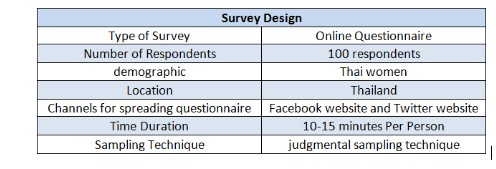
4.1: Demographic Profile of Respondents
This study has collected data from 218 Thai women aged between 18-34 years old on Facebook and Twitter by messaging the questionnaire link between the periods of 11-14 in August 2017.The demographic profiles of the respondents are showed in Appendix table B1-B4. The analyzed data shows that the majority of respondents was around 18-24 years old (50.9%); followed by ages of 25-29(35.3%) and then 30-34 years old (13.8%), they were employees (52.8%), students (21.1%), business owners (14.7%), freelance (6.4%), and unemployed (5.0%). According to Appendix Table B4 the most of the respondents had low income level which were 10,000 - 30,000 Baht a month or around £200 - £600(54.6%), and less than 10,000 Baht (28.4%). Whereas, the minority of respondents had high-income level were 70,000 - 100,000 Baht (£600 - £2,000) (1.8%), and more than 100,000 Baht (0.9%).
4.2: Social Media Usage of the Respondents
The Appendix table B5-B8 shows the social media usage of the respondents. It was found that most of the respondents are more likely to use social media more than 9 hours a week (71.1%) and around 6-9 hours a week (19.3%); while the usage of 7.8% of the respondents was around 3-6 hours a week and the few respondents who rarely use social media less than 3 hours a week (1.8%). Facebook is the most preferred social media website that the respondents often use, while Twitter was least used by the respondents (The table B6). Furthermore, the table B7 illustrates that that main reason of using social media was keeping in touch with friends and family (74.8%). Whereas, finding information about products/services/ brands just only (41.4%). The Appendix table B8 was shown that the frequency of respondents seeking other opinions when researching new cosmetic products was rarely (37.2%) and occasionally (33.5%).
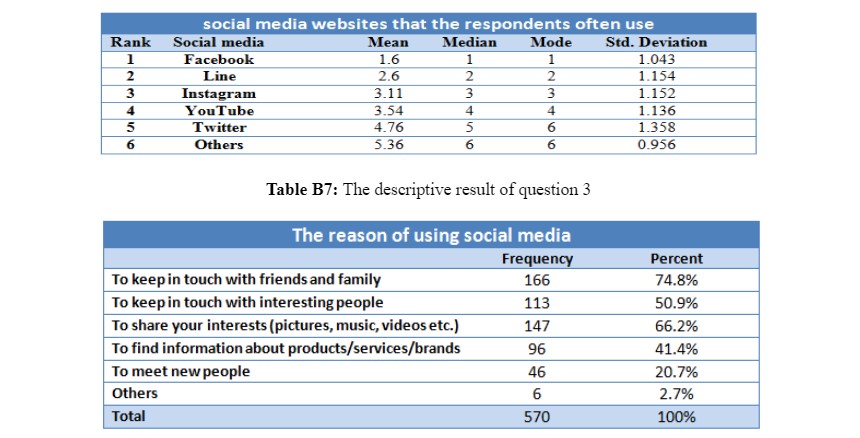
4.3: The Impact of Beauty Social Media Influencers
According to Appendix Table B19, the mean of familiarity of the respondents on the lists of the famous social media influencers is 3.15. It means that the level of familiarity of the most respondents chose was the moderately familiar. However, the percentage of respondents who followed beauty social media influencers was 66.5% (Appendix table B10). Moreover, the main reason of the respondents following social media influencers was entertaining (32.9%), learning some techniques (23.3%), and finding latest cosmetic products (20.8%) (Appendix table B11). Furthermore, the most popular channel used by the respondents in order to follow beauty social media influencers was Instagram (40.8%), while Facebook was used in second channel(37.6%) and YouTube was the third channel(Table B12).
Table B12: The descriptive result of question 8
4.3: The Impact of Beauty Social Media Influencers
According to Appendix Table B19, the mean of familiarity of the respondents on the lists of the famous social media influencers is 3.15. It means that the level of familiarity of the most respondents chose was the moderately familiar. However, the percentage of respondents who followed beauty social media influencers was 66.5% (Appendix table B10). Moreover, the main reason of the respondents following social media influencers was entertaining (32.9%), learning some techniques (23.3%), and finding latest cosmetic products (20.8%) (Appendix table B11). Furthermore, the most popular channel used by the respondents in order to follow beauty social media influencers was Instagram (40.8%), while Facebook was used in second channel(37.6%) and YouTube was the third channel(Table B12).
Table B12: The descriptive result of question 8
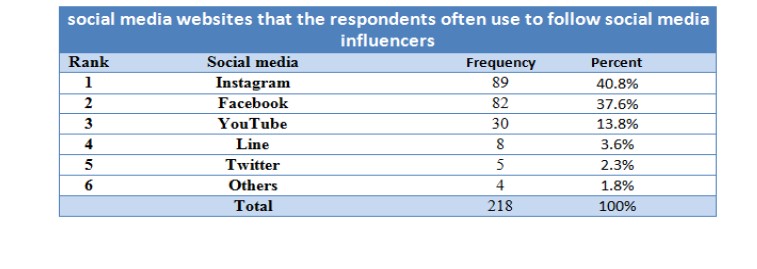
4.4: Hypotheses Testing
This study includes 7 hypotheses, which are tested by the p-value 0.05 to test the association between variables, which are significance when p- value is below 0.05. The hypothesis 1 was tested by one sample z-test to test the mean of the variable which is the impact of social media influencers’ recommendation on purchase cosmetic products in question 14 by defining test value = 3.
The result was found that the mean of the impact of social media influencers’ recommendation on purchase cosmetic products with score of 3.0. Mean of the variable (2.66 ± 0.97) was significantly lower than a normal impact score of 3.0, t (217) = -5.25, p = 0.00. Thus, the author can reject the null hypothesis and accept the H1. The hypothesis 2 is social media influencer marketing has a positive impact on all stages of the decision making process of consumer on the cosmetic industry in Thailand. Five step of the process were divided into five hypotheses to test the hypothesis 2. The author defined the independent variable as the impact of social media influencers’ recommendation in question 14, bivariate regression was used to test each stage of purchase decision process to find out the association between variables. The results demonstrate that the level of significances of all stage of purchase decision are below p-value 0.05, this means the null hypothesis 2 is rejected and accept the hypothesis 2
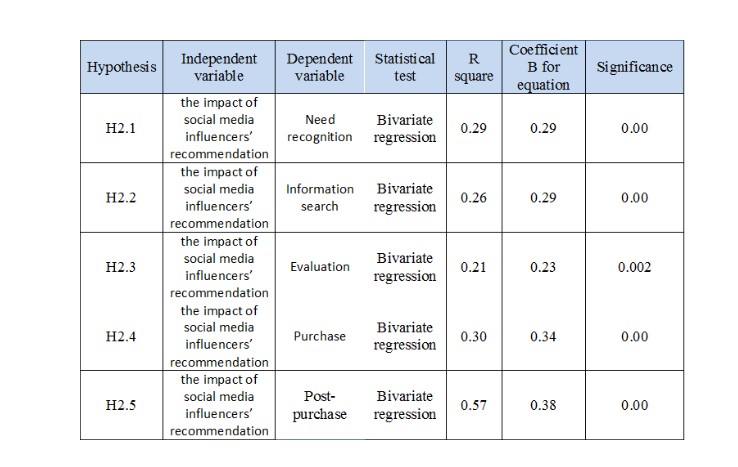
According to table 2, H3, H4, H5and H7 these hypotheses were tested by bivariate regression to test the association between variables. The result of testing hypothesis H3 is shown that the relationship between reliable and purchase decision-making is positive. For each unit change in reliable, purchase decision-making increases by 0.26 units. Reliable is significant in predicting purchase decision (p-value=0.00); the overall model fit (R2) is = 0.29.
The hypothesis 4 shows that association between the fame of social media influencers and purchase decision-making is positive. For each unit change in the fame, purchase decision making increases by 0.36 units. The fame is significant in predicting purchase decision (p-value=0.00); the overall model fit (R2) is = 0.37.
The hypothesis 5 is tested such that association between the unique lifestyles of social media influencers and purchase decision-making is positive. For each unit change in the unique lifestyles of social media influencers, purchase decision making increases by 0.22 units. The unique lifestyles of social media influencers is significant in predicting purchase decision (p-value=0.001); the overall model fit (R2) is = 0.23.
The hypothesis 7 is analyzed that association between the showing something alluring to look at and purchase decision-making is positive. For each unit change in this independent variable, purchase decision-making increases by 0.36 units. The showing something alluring to look at is significant in predicting purchase decision (p-value=0.00); the overall model fit (R2) is = 0.37.
The table shows that the four hypotheses were found statistically significant as the coefficient significance are below p-value 0.05. Thus, the null hypotheses are rejected and accept the hypothesis3, 4, 5 and hypothesis 7.
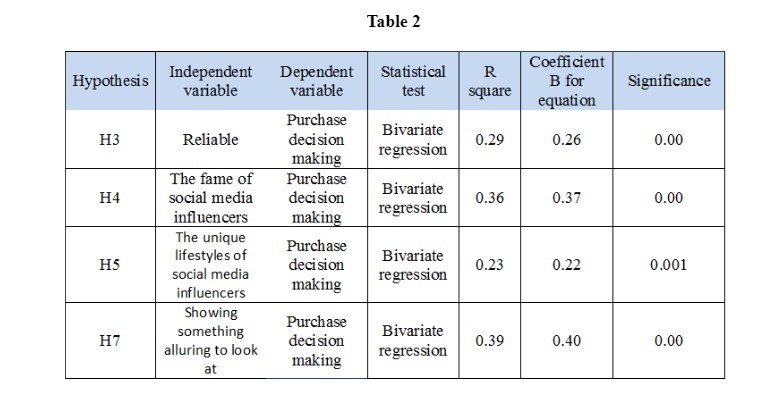
Hypothesis 6 was tested by the multiple regressions to find out whether the variables have an association with purchase decision. The result shows that the number of links of their posts (β=0.20, p-value=0.11), the number of shares of their posts (β=0.11, p-value=0.45), the number of comments of their posts (β=0.06, p-value=0.58). There are the three factors of social media influencers that have not the significant impacts on purchase decision. Thus, the null hypothesis of H6 cannot be rejected.
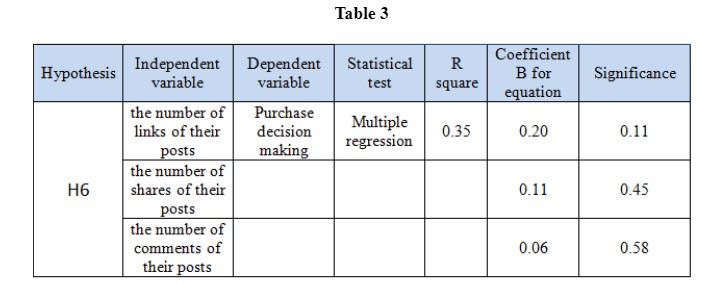
4.5: Other Factors of Social Media Influencers
The author has to answer the research question 3, which is “what factor impacts on consumer’s purchase decision by using multiple regression analysis to test 11 independent variables with purchase decision-making” in Table 4. The results were found that there are only two variables have the level of significance lower than p-value 0.05 which are Relatable and Showing themselves with cosmetic products. Thus, the both variables have an impact on consumer decision making.
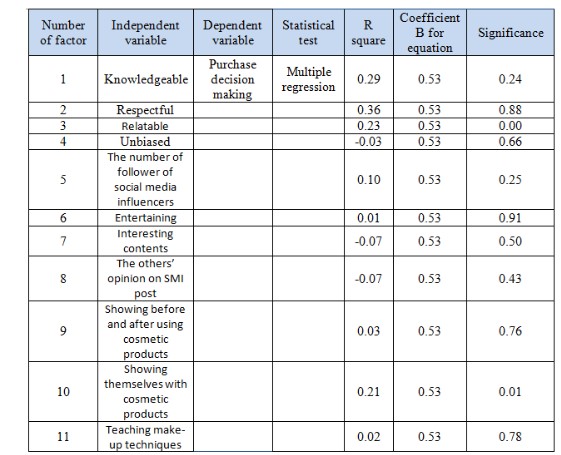
4.6: Post Purchase of the Respondents
According to Appendix table B15, there are 36.7% of the respondents who had ever brought the cosmetic products from social media influencers or followed by their recommendation. Moreover, the table B16 shows the mean of satisfaction of the respondents after purchasing the products is 3.5. The majority of respondents chose indifferent (40.8%) and satisfied (40.8%). Furthermore, the respondents recommended the product to their friends after purchasing (68.8%), while 16.3% and 15% did not recommend and cannot remember, respectively (Appendix table B13).

CHAPTER-5: DISCUSSION
5.1: Introduction
The chapter presents an overview of key findings along with associating them with the findings of the literature review in order to ascertain the positive or negative association. For this purpose, the research questions have been discussed and analysed in length to reach towards proper conclusion
5.2: Discussion
The first research question was how much power do social media influencers have on consumers on the cosmetic industry in Thailand and in this regard, the literature review found that the impact of social media influencers is quite high on the consumers of cosmetic in Thailand. Georgia (2015) termed social media influencers as people having high knowledge and recommendations that often help others in their buying decisions. The recommendations and suggestions of such influencers is also taken very seriously because of their knowledge in specific domain. It was also found that people following such influencers on Facebook or Twitter tend to shape their buying behavior as per their advices and opinions. Another striking observation found suggested that people follow celebrities and bloggers more than companies and products (Cao, et al, 2014). This also means that the views and opinions of such influencers matter the most whilst the appeal of products and services remains secondary. Martinka (2012) further stated that the reasons behind such strong following of influencers by citing reliability and trust as major factors. Majority of the followers have huge trust on such influencers that make their opinions count and valid. In addition, word of mouth also helps in strengthening their credibility among the followers. The literature review further found that the power of social media influencers is hard to quantify mainly because of the fact that impact and influence is intangible in nature. This means that even though the impact on consumers can be theoretically ascertained, the actual numerical value is hard to identify (Zietek, 2016). This raises questions over the validity and reliability of such findings but the primary research was also conducted in order to ascertain the truth of literature findings. The primary findings based on bivariate regression revealed that consumers have high trust on influencers and their recommendations. The findings also supported the notion that social media influencers have positive influence on all stages of decision-making process regarding the buying of cosmetics.
The fame of social medial influencers along with unique lifestyle also helped in gaining the trust and following of such influencers. Overall, it can be said that the primary data completely supported the notion that social media influencers have positive impact on the consumers of cosmetic industry of Thailand. This also means that there is a close association between the findings of the primary and secondary research helping in concluding the fact that social media influencers play an important and positive role in shaping and affecting the buying behavior of Thai consumers when it comes to cosmetics. The second research question was how does social media influencer marketing impact on the stages of the decision making process on consumers on the cosmetic industry in Thailand and the literature review covered good amount of information on the same.
It was found that social media influencer marketing gained great deal of popularity and acceptance among wide set of consumers spending good amount of time on social media. These people tend to be largely influenced by the position and appeal of such influencers. Over a period of time, marketers realised the potential of social media influencer marketing in order to drive customer engagement and awareness. Park (2016) added that virtual platforms have been quite successful in addressing the needs of consumers. The level of interaction is not only interesting but happens in real time generating instant reaction, sharing, and awareness. Shimp and Andrews (2013) further supported this notion by adding that marketers using such influencer marketing tactics were successful in reaching out to large numbers of consumers having connection or liking with such influencers that helped in impacting their buying behavior in the short and long run.
The content and endorsement of such influencers was found to be more effective and reliable among the consumers that further enhanced the level of word of mouth along with creating win-win situation for the marketers as well as for consumers. The primary data in this regard suggested that majority of the social media influencers have large fan following that believes, their knowledge is quite high compared to general endorsement acts. The consumers also believed that they are unbiased and entertaining in nature when it comes to the content that appeals them. The act of coming up with products and highlighting the before and after effects along with strengthening the beliefs of consumers in regards to the credibility and authenticity of products help in impacting the stages of decision making process in a systematic manner. It needs to be stated that social media influencers are generally seen in different forms through images, videos, and interactive content with great amount of visibility. Thus, the impression and effect lasts for a long period of time (Brouwer, 2017).
This also means that just like the previous research question, this also shows that there is great deal of positive association between the findings of primary and secondary data. The third research question was “what is the social media influencer factor that pushes a customer from initial product awareness to consideration to purchase if any”. In this regard, the literature review found that the first factor was in the form of knowledge of influencers along with their fame and unique lifestyle. It was also found that majority of the influencers have huge following and large amount of likes and comments on their social media profile. This results into instant belief of having credibility and reliability (Brown and Hayes, 2008).
Erkan (2016) found that social media influencers often endorse products along with showing before and after effects. This also helps in generating instant reactions. At the same time, showing videos and interactive information helps in persuading consumers along with forming instant connections with them that helps in pushing them from product awareness to consider buying the same. This also means that even though the impact is instant, the results are based on how well influencers have been successful in delivering the idea along with forming the connection with the audiences. Brown and Fiorella (2013) believed that consumers already have the notion of influencers having better knowledge and awareness regarding products and is enough to raise product awareness. Later, their appeal and way of promoting a product helps in altering the buying behavior in a significant manner. The primary data in this regard revealed that the number of likes, following, and shares affect the buying behaviour of consumers along with reliability and alluring way of endorsing the products. This also shows that such influencers have high ability to enhance product awareness along with influencing the buying behaviour of consumers in a significant manner.
This also shows that there is again a positive association between the findings of the primary and secondary data. The fourth research question was based on ascertaining the main reasons affecting consumers to follow their social media influencers. The literature findings suggested that there are a number of factors in the form of persuasion, consistency, liking, social proof, authority, authenticity, popularity, and uniqueness. All these factors are good enough in terms of affecting consumers along with compelling them to follow social media influencers. The number of people following such influencer often vouches for their credibility and authenticity and their suggestions and advices along with endorsements are taken in a serious manner. This is mainly because of the fact that these people are assumed as reliable and knowledgeable when it comes to seeking suggestion on buying cosmetic or any other product.
The primary findings further found that the primary reason behind following influencers was surely their reliability, public image, fan following, uniqueness, and knowledge. It also needs to be stated that these findings were confirmed based on the regression tests that revealed vital information and can be identified in the finding chapters. Overall, it was found that there has been a close relationship between the primary as well as secondary findings. The findings also suggested that social media influencers have the power and appeal to affect the level of awareness along with shaping the short and long term buying behaviour in a significant manner.
5.3: Summary
The chapter presented an overall analysis of the research questions where it was found that social media influencers have the tendency to affect the buying behaviour of consumers along with enhancing the product awareness level. This is mainly because of their product knowledge, reliable appeal and fame in the society, uniqueness of their lifestyle, fan following and likes on their social media profiles, and consistency in terms of promoting a product. This often results in word of mouth that is further helpful in impacting the buying behaviour in a positive manner. The next chapter presents conclusion that will summaries the key findings and results of the research work in a critical manner.
6.1: Major Conclusion
The rise of social media and technology have made it faster and easier for people to communicate to one another, this has resulted into many communication channels creating enormous information. Nowadays, consumers are exposed to wide arrays of media that makes information access easy and affordable to an extent (Beaudoin, 2008). Even though it is a great chance for consumers to obtain product and service information from many channels, it makes their buying decisions hard mainly because of the availability of too much information (Brown and Fiorella, 2013). Thus, consumers tend to ignore information coming from companies and focusing on credible information coming from different influencers and social media experts (Brown, Hayes, 2008). Social media influencers are industry experts, activists, enthusiasts, You Tubers, Bloggers, or Celebrities. They are able to use power of social media to reach many followers anticipating them to update and post a relevant content through social media platforms such as Facebook, Instagram, and Twitter (Brown, Hayes, 2008). Thus, people can use social media influencers’ recommendations to filter information along with making a buying decision.
The discussion revolved around the impact of social media influence on cosmetic industry in Thailand. In this regard, both primary and secondary research was included where a number of findings in the form of the literature analysis were conducted. It was found that social media has gained immense popularity and so has social media influencers who have distinct power, appeal, and reliability that is good enough to garner the attention of millions of consumers. In regards to Thailand cosmetic industry, it was found that social media influencers often post reliable and knowledgeable content using images, videos, and pictures that are not only shared but also followed with great interest. In addition, people form pre-convinced notions that content coming from such influencers is bound to be honest, reliable, and valid helping in shaping their buying behaviour. With large numbers of shares and following, the credibility factor reaches new height within a small period of time. However, post purchase decision might not be as positive as pre-purchase decision especially when the product fails to exceed the expectations. In this research work, it was found that both pre and post purchase decisions were significantly positive helping in increasing the trust factor regarding influencers. The primary findings being aligned with secondary findings also showcased the benefits of social media influencers.
It was found that these influencers are often believed to be knowledgeable that helps in building the trust factor. In addition, their words and suggestions are followed carefully that strengthens the trust on products along with supporting the buying decision. The findings also suggested that believing on such social media influencers was based on initial trust and sense of liking that turned into virtual connection leading to trusting on a reliable source of information. In the due process, the research work was able to address all the key research questions along with testing the hypotheses using numerical tools. Based on all the relevant findings and critical analysis, it can be concluded that the role of social media influencers in affecting the buying behaviour of consumers is quite high. The same is very much applicable in regards to Thai consumers where the buying behaviour related to cosmetics was largely shaped by the recommendation, advices, and suggestions of these influencers. However, the research also needs more findings in relation to whether such findings exist in all industries across all industries or applicable only in regards to the cosmetic industry of Thailand.
Brouwer, B. (2017). Why Brands Are Investing More Into Influencer Marketing in 2017. EContent, 40(3), 32
Brown, D and Hayes, N. (2008). Influencer Marketing Who Really Influences Your Customers? 1st ed. Amsterdam; Boston.
Brown, D and Fiorella, S (2013). Influence Marketing How to Create, Manage, and Measure Brand Influencers in Social Media Marketing. 1st ed. Indianapolis; Indiana.
Boon-long, S., & Wongsurawat, W. (2015). Social media marketing evaluation using social network comments as an indicator for identifying consumer purchasing decision effectiveness. Journal of Direct, Data and Digital Marketing Practice, 17(2), 130-149.
Bryman, A., & Bell, E. (2015). Business research methods (Fourth ed.). Oxford: Oxford University Press
Cao, P., Meister, S. and Klante, O. (2014). How Social Media Influence Apparel Purchasing Behavior. Marketing Review St. Gallen, 31(6), pp.77-86.
Chaipraditkul, N. (2013). Thailand: Beauty and globalized self-identity through cosmetic therapy and skin lightening. Ethics in Science and Environmental Politics, 13(1), 27-37.
Erkan, I. (2016). The Influence of Electronic Word of Mouth in Social Media on Consumers’ Purchase Intentions. Unpublished Ph.D. thesis. Brunel University.
E-marketer (2015). Marketers pair up with influencers and it work. E-marketer.
Available from: https://www.emarketer.com/Article/Marketers-Pair-Up-with-Influencersand-Works/1012709 (Accessed: 14 August 2017).
Georgia, A. (2015). The Leading Role of Influencers in the YouTube Beauty Community. Unpublished MSc Thesis. Linnaeus University.
Google (2017). Google forms. Google. Available from: https://www.google.co.uk/forms/about/ (Accessed: 16 August 2017).
Kotler, P., & Armstrong, G. (2016). Principles of marketing (Sixteenth ed.). Harlow: Pearson Education Limited
Lee, JE and Watkins, B. (2015). YouTube vloggers' influence on consumer luxury brand percep
tions and intentions. Journal of Business Research, 69, 5753–5760.
Martinka, L. (2012). How Social Media Communities Impact Consumer Behavior, Unpublished Ph.D. dissertation. Gonzaga University
Malhotra, N (2010). Marketing research. (Sixth ed.). Harlow: Financial Times/Prentice Hall.
Manalertruengkul, P. [@Pimtha]. (22 July. 2017). [Photo of selling a product]. Retrieved from https://www.instagram.com/p/BW2HEDLFgOn/?hl=en (Accessed: 17 August 2017).
Nantasuthiwaree, W. (2016) Communication Strategy of Cosmetic Products through Net Idols on Social Media and Thai Female Teenagers' Buying Decision. Unpublished MSc Thesis. Bangkok University.
Park, S (2016). An Investigation of Electronic Word-Of-Mouth (e-WOM) Dynamics on Social Networking Services (SNSs) Based on the Integrative Theoretical Framework, Published Ph.D. dissertation. Northwestern University.
Rosenthal, S. (2015). Detecting Influencers in Social Media Discussions.
Published Ph.D. dissertation. Columbia University.
Saravanakumar, M. and SuganthaLakshmi, T. (2012). Social Media Marketing, Unpublished Ph.D. dissertation. Anna University.
Shimp, T., & Andrews, J. (2013). Advertising, promotion, and other aspects of integrated marketing communications (Ninth ed.). Australia: Southwestern
Sherman, L., Payton, A., Hernandez, L., Greenfield, P., & Dapretto, M. (2016). The Power of the Like in Adolescence. Psychological Science, 27(7), 1027-1035.
Saunders, M.N.K., Lewis, P. and Thornhill, A. (2006) Research methods for business students. 4th ed. Harlow, England: Financial Times/Prentice Hall.
Tungpradit, W and Premchaisawad, W and Chetthamrongchai, P. (2017). Building brand equity through Facebook influencing purchasing intention of cosmetics in Thailand. Unpublished Ph.D. dissertation. Siam University.
Teabdokmai, S. (2016). 10 Thai Beauty Bloggers to Follow for Inspiration and Advice. Bangkok: Siam2nite. Available from: https://www.google.co.uk/forms/about/ (Accessed: 15 August 2017).
Uzunoglu, E. and Kip, S. (2014). Brand communication through digital influencers: Leveraging blogger engagement. International Journal of Information Management, 34(5), 592-602.
Woods, S. (2017). The Emergence of Influencer Marketing. Unpublished Ph.D. University of Tennessee.
Weare, A. (2016). Beauty Work: A Case Study of Digital Video Production and Postfeminist Practices on YouTube's Icon Network, ProQuest Dissertations and Theses. The University of Iowa.
Zhang, Y. (2014). Online Social influence, Unpublished Ph.D. dissertation. University of Maryland.
Wang, X., Yu, C., & Wei, Y. (2012). Social Media Peer Communication and Impacts on Purchase Intentions: A Consumer Socialization Framework. Journal of Interactive Marketing, 26(4), 198-208.
Wendlandt, B. (2012). Return on investment concerns in social media marketing: an examination of recent cases. Published MSc dissertation. The College of St. Scholastica.
Zietek, N. (2016). Influencer Marketing - the characteristics and components of fashion influencer marketing. Unpublished MSc Thesis. University of Borås.
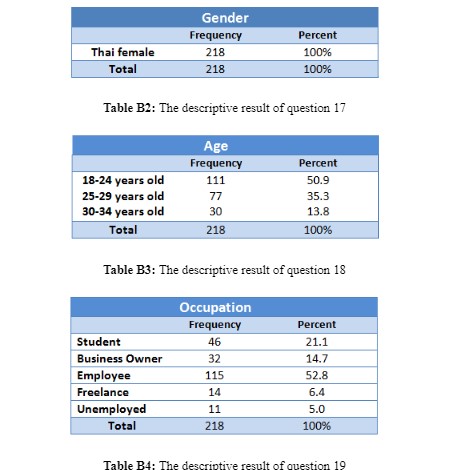
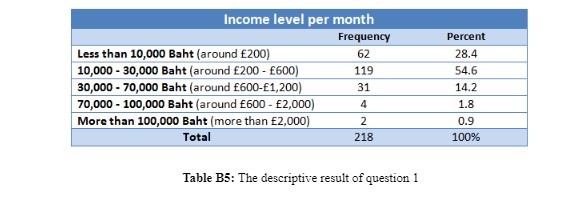
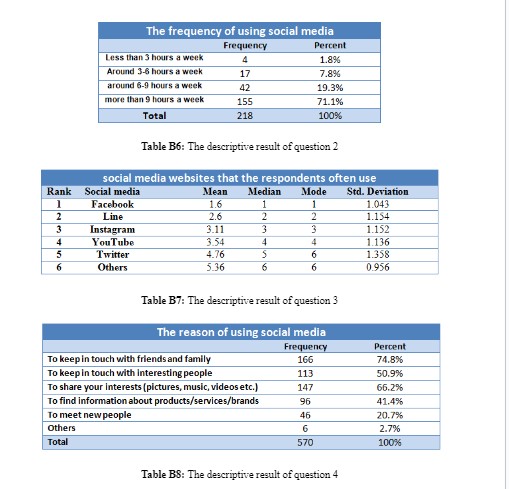
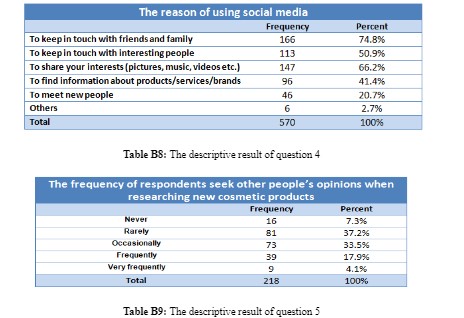
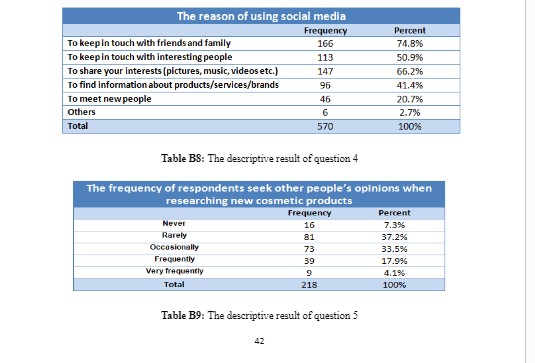
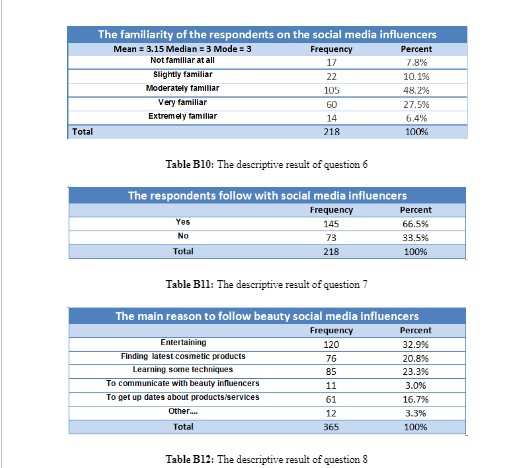
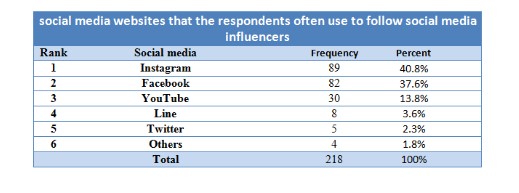
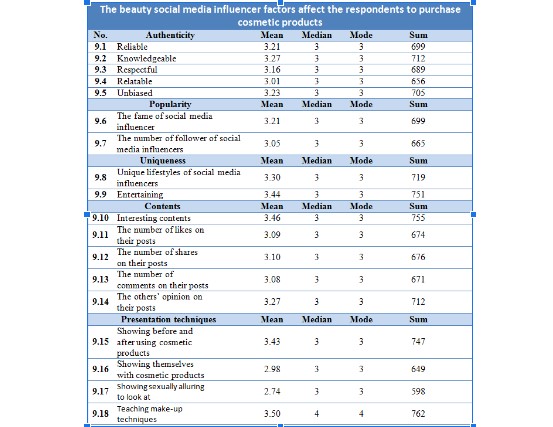

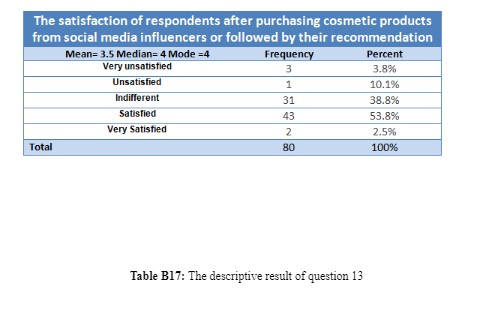
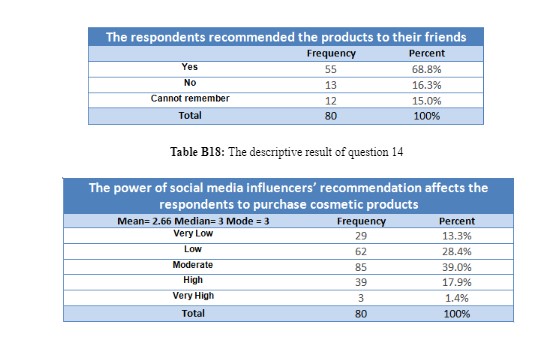
Uniresearchers is a leading team of researchers in the field of academic writing. With the track record of delivering 500+ high quality dissertations and 2500+ essays, assignments and coursework’s Uniresearchers has always tried to keep up with the expectations of our clients.
Uniresearchers is a leading team of researchers in the field of academic writing. With the track record of delivering 500+ high quality dissertations and 2500+ essays, assignments and coursework’s Uniresearchers has always tried to keep up with the expectations of our clients.